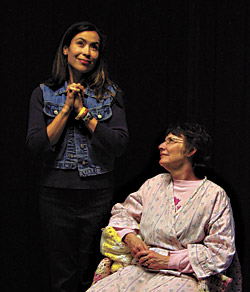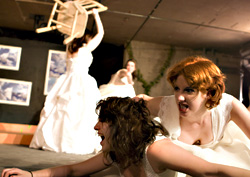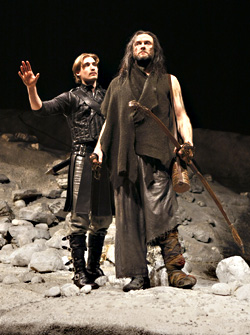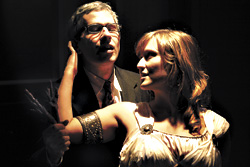At the Sept. 10 Blessing Ceremony at the East Kong Yick Building, Wing Luke Asian Museum Executive Director Ron Chew will have one hell of a blessing to celebrate: an avalanche of prestigious grants totaling about 65 percent of what he needs to convert the vast, decrepit 1910 landmark into the red-hot cultural center of the International District he envisions. Mild as a bald monk, Chew seldom raises his voice—but can he raise money! Having already approximately octupled Wing Luke’s original $130,000 budget, he plans to pour $24.7 million into the new Kong Yick digs and move in in 2007.
Others in the Seattle arts community are not as circumspect as Chew, and sniping about the project can be heard in certain corners. “It’s laudable, but I’m skeptical,” sniffs writer and curator Matthew Kangas, Seattle’s irascible answer to art critic Clement Greenberg. “If you don’t raise money for the endowment at the same time, then you’re stuck with a huge overhead. That’s where Bellevue Art Museum failed”—a $23 million flub. “And SAM is sucking up all the money for the entire region.” Chew, a steel-nerved gambler, won’t launch his endowment campaign until 2007. He plans to run the new space—10 times the museum’s current size—with his current educational and program staff, on a budget only a half-million more than his current $1 million. His main model, New York’s Lower East Side Tenement Museum, runs 8,500 square feet on a $4.3 million budget. “We’re the Little Engine That Could,” Chew explains.
Besides Allen and Gates and Rockefeller largesse, the engine’s fuel is little-guy input. Instead of hiring curators, Chew solicits ideas and resources from the Asian-American community. Wing Luke is the opposite of a typical American museum, built around a rich person’s precious collection of objects. “It’s not collection-driven,” says Chew, who has only begun soliciting items to fill the 59,000-square-foot space—including Gov. Gary Locke’s personal papers and the gilded altar used by Kong Yick’s original immigrant occupants.
But this very disparity is what threatens Wing Luke, insists Kangas, who dismisses its art shows as “an afterthought, either too didactic or done by committee—not up to art museum standards. If you don’t commit to visual arts, you won’t get money from the visual arts community.” Tacoma’s attempted Asian art museum died ignominiously last year, and the Seattle Asian Art Museum’s attendance and philanthropy have been lackluster. “The great Asian art collectors here are white,” says Kangas. “Seattle’s Asian-American community is not mature enough to support arts institutions. The SAAM is proof of that.”
“Oh, that’s bullshit!” snaps Velma Veloria, the first Filipina-American state legislator in the mainland U.S. and a major arts maven who might KO Kangas in a boxing bout. “How can you say the Asian-American culture is not mature enough to support a museum? Look what they’re doing with Ron’s museum. Whoever thought that the Wing Luke would be part of the Smithsonian?” (It is the Smithsonian’s first Northwest affiliate.) “We’ll be able to raise the money.
“Traditional art collectors are so conservative and classist,” complains Veloria, who claims she met upper-crusty resistance in championing Filipino art at SAM. “We’re an immigrant community. There are very few that are, like, rich collector types, right?” While Seattle’s pioneer aesthetes were collecting in Asia, Asian-Americans were busy building Seattle, many while residing at Kong Yick. And, Veloria says, art permeated their lives. “Good God! Look at the art all over their walls! Look at Angkor Wat! Don’t tell me that’s not ‘mature enough’!”
Part of Wing Luke’s problem—and promise—is that it’s not quite comparable to any art museum. “What are we? Are we a history museum? An art museum? A genealogical center?” Chew asks. “We’re a mixture.” Kong Yick will also contain a small theater, with input from board member Sharon Ott, late of Seattle Rep.
Chew will sort out Wing Luke’s fascinating identity crisis later. Right now, he’s got millions to raise from thousands of increasingly small donors. “That’s where the sledding becomes very, very difficult.” But then, Ron Chew isn’t interested in easy rides.








